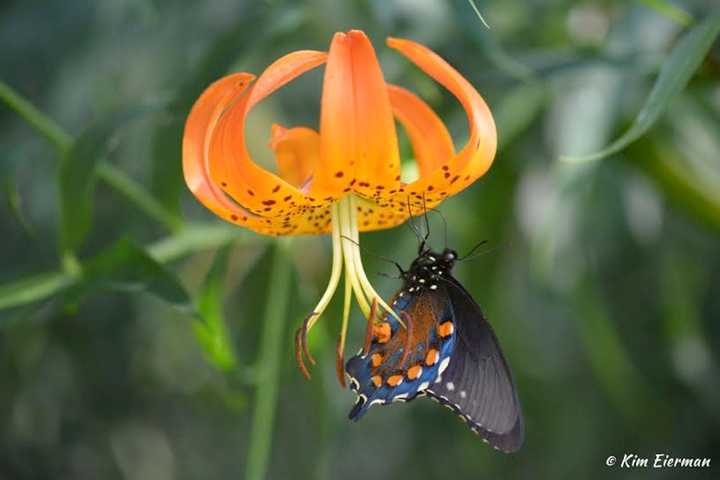You can help attract and support butterflies in your own landscape by understanding what they need, and by following “butterfly best practices.”
Butterfly Diets
The vast majority of our butterflies have a different diet as caterpillars than they do as adults. While most adult butterflies eat nectar, most caterpillars are obligate feeders on leaves of certain plants. It’s not “one size fits all” though. Different caterpillar species eat different plant species – known as their host plants.
If you don’t grow host plants, or have them nearby, you cannot support ongoing generations of butterflies. Nectar plants, by themselves, are not enough. Non-native Butterfly Bush is an example – it only serves as a nectar source, not a host plant, to our butterflies. It would be more appropriately named “Nectar Bush.”
Host Plants – Trees and Shrubs
Host plants extend far beyond milkweeds that feed Monarch caterpillars. Often overlooked are our native trees and shrubs. Tulip Tree, Ironwood, Sweetbay Magnolia and Black Cherry are some of the native trees that feed the caterpillars of the Eastern Tiger Swallowtail. Spicebush and Sassafras are critical for Spicebush Swallowtails. Black Willow, Cottonwood, American Elm, and Hackberry all feed Mourning Cloaks.
Host Plants - Perennials
Some native perennials, including milkweeds, serve as host plants, in addition to being nectar plants. Examples of these double-duty native plants include: Golden Alexanders - a host plant for Black Swallowtails, violets - host plants for Fritillary butterflies, asters that feed the caterpillars of the Pearl Crescent and Silvery Checkspot, and sunflowers that are hosts to several species of Checkerspots.
Host Plants - Grasses and Sedges
Unlike non-native turf grasses, quite a few of our native grasses and sedges are butterfly host plants. Big Bluestem, Little Bluestem, Indian Grass, Wool Grass, and Switchgrass are host plants for several species of Skippers. Native sedges, short grass-like plants, have been documented as host plants for 36 species of caterpillars. Making them even more valuable, native grasses and sedges also provide seeds for birds.
Host Plant References
To determine which host plants you need for butterflies, two good references are: Caterpillars of Eastern North America by David L. Wagner and The Connecticut Butterfly Atlas edited by Jane O’Donnell et al. The Native Plant Society of New Jersey offers a list of host plants on their website. And, there is a handy tip sheet on native host plants available in the EcoBeneficial online store.
This is the first of two parts. In the next part of this series, learn more best practices for supporting butterflies in your landscape. It’s just not summer without butterflies!
Kim Eierman, a resident of Bronxville, is an environmental horticulturist and Founder of EcoBeneficial. When she is not speaking, writing, or consulting about ecological landscapes, she teaches at the New York Botanical Garden, Brooklyn Botanic Garden, The Native Plant Center and Rutgers Home Gardeners School.
Click here to follow Daily Voice Paterson and receive free news updates.
